One day in Venice, Italy, allows you to become acquainted with the headline sights of what is widely considered one of the world’s most beautiful cities.
On Italy’s northeast coastline, La Serenissima (or “Most Serene”), as the city has been known since medieval times, is scattered across 118 islands in the Venetian lagoon between the Po and the Piave rivers.
Its narrow canals, often lit up with the reflected dusky hues of the buildings, are channels of legendary romance, echoing with the songs of gondoliers.
Adding to the sense that Venice really is a destination like no other is the city’s distinctive and extraordinarily elegant Venetian gothic architecture. This style is characterized by nimble porticoes, patterned facades, and delicately wrought stonework.
One day in Venice, Italy, is enough to become wrapped up in the city’s overt beauty, its ebullient history, and its delicious cuisine. Read on to find out how you could spend it.
9 a.m.: Discover the Rialto Bridge and Market
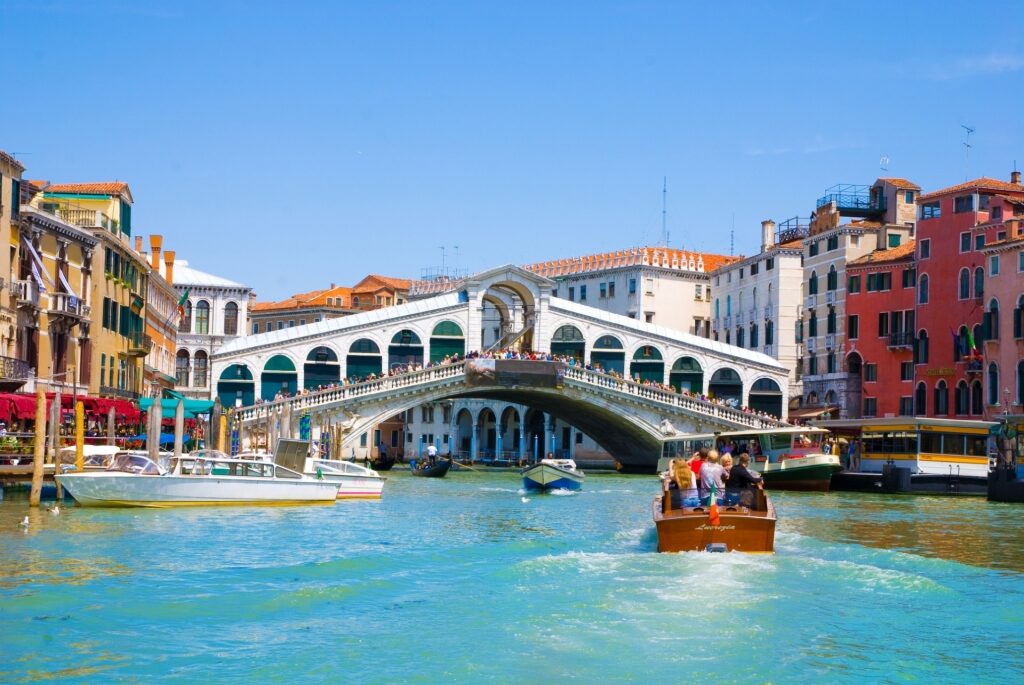
Rialto Bridge
The striking Rialto Bridge is a symbol of Venice and a wonderful place from which to tap into the city’s unique style.
Stepping onto it allows you to look down the stately progress of the Grand Canal over which the bridge elegantly arpeggios. Constructed over a three-year period towards the end of the 16th century, its pale Istrian stone portico is instantly recognizable.
Up until midway through the 19th century, it was the only way to cross from the sestieri (districts) of Saint Marco to San Polo by foot. Otherwise, you would have to negotiate passage with a gondolier.
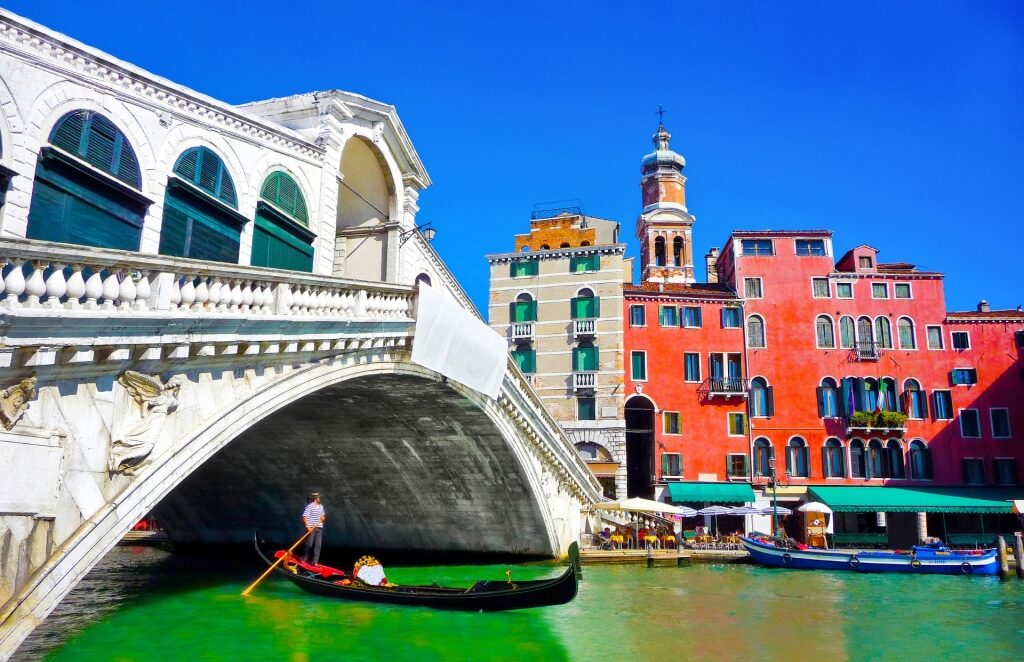
Rialto Bridge
Today there are four bridges crossing the canal, although this hasn’t stopped the Rialto from having any less foot traffic. Arrive early with the crowning stone arch softly luminous in the morning light, it’s the perfect vantage point from which to take in the vaporetto, gondola, and speedboat traffic.
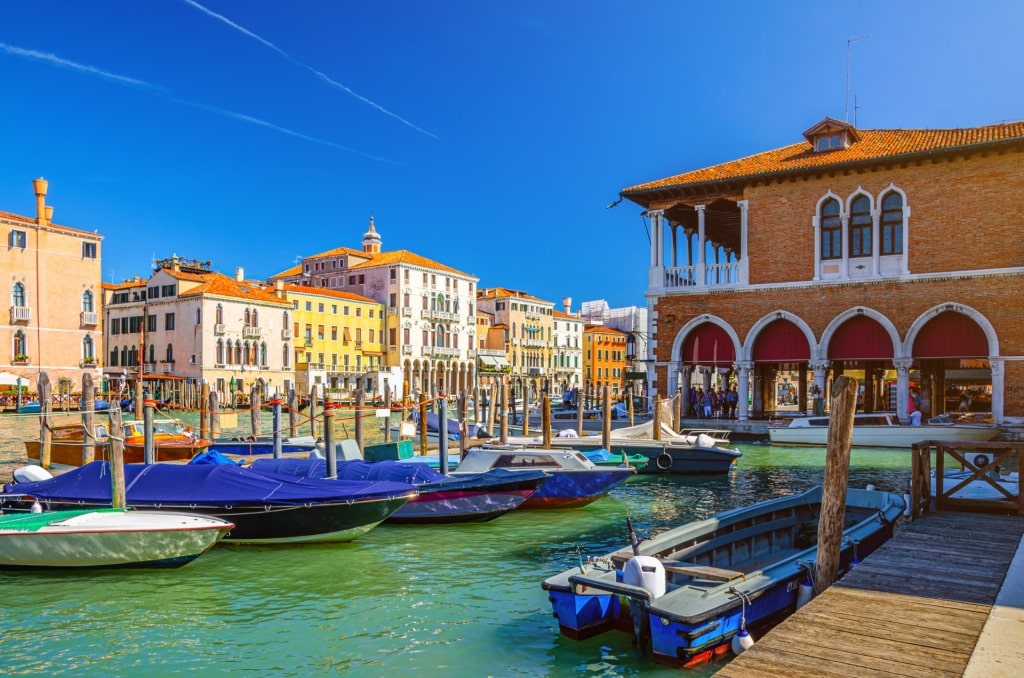
Rialto Market
Once you’ve leaned on the balustrades long enough and browsed the many Murano glass trinkets in the bridge’s shops, cross over to San Polo.
Here you’ll find the Mercato di Rialto, one of the best markets in Italy, its generously laden stalls filled with quivers of white asparagus delivered in crates onto its quayside.
9:30 a.m.: See San Polo
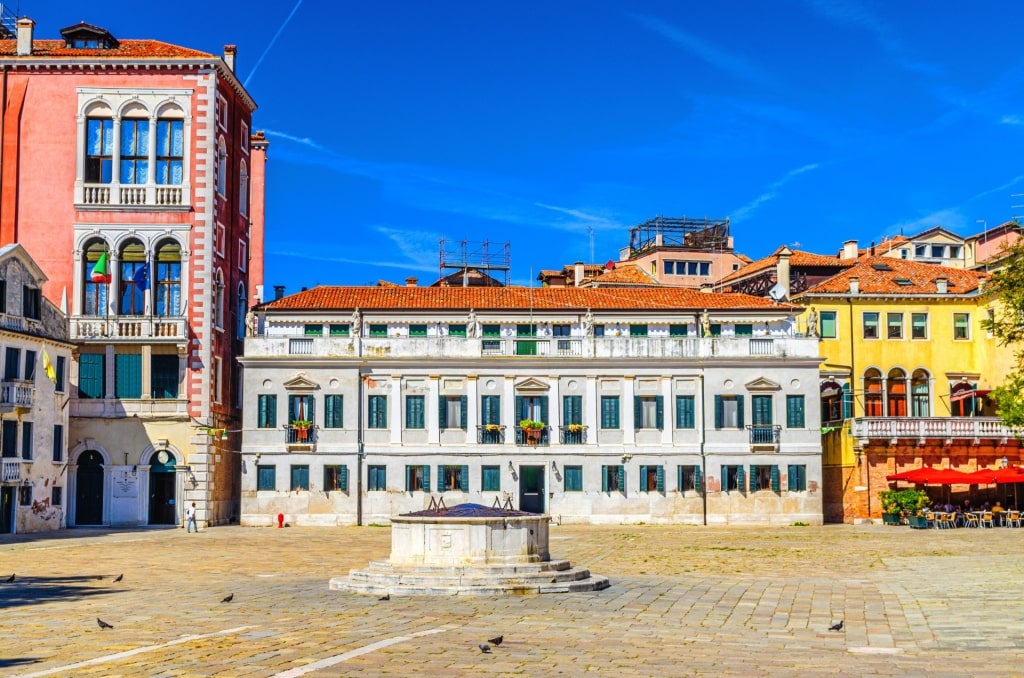
San Polo
After inhaling the aromas and listening to the hawkers’ clamor at the Rialto Market, you’ll find yourself in the sestiere (district) of San Polo. Beyond the markets, the Venetian mask boutiques, and the bridge, San Polo is home to a number of sights definitely worth seeing with one day in Venice.
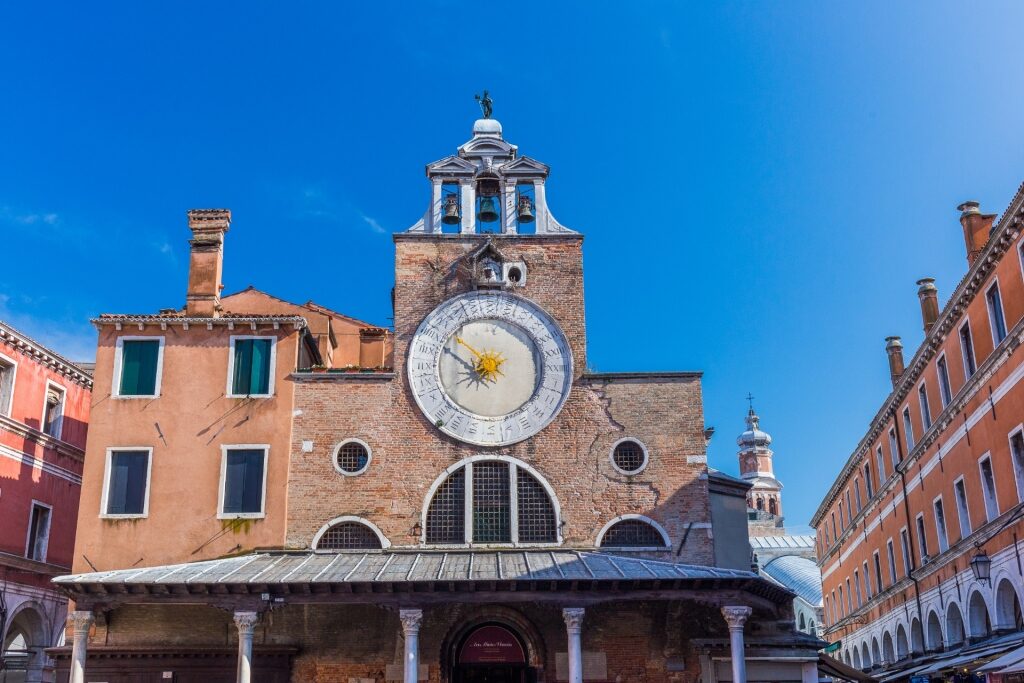
Church of San Giacomo
One stop worth a visit is the Church of San Giacomo. Its relatively tiny dimensions hint at its fifth-century origins, and it’s believed to be the oldest church in the city.
Close to the Rialto Bridge, and, from some angles, looking almost like an extension of it, is another bone-white historic edifice, the imposing Camerlenghi Palace.
With its marble facade inscribed with tall, austere windows, the palazzo has enjoyed a longevity of purpose as the city’s financial magistrate’s headquarters. While the palace doesn’t permit casual passers-by, you can check out the stunning interior of the nearby Scuola Grande di San Rocco and its huge trove of Tintoretto paintings.
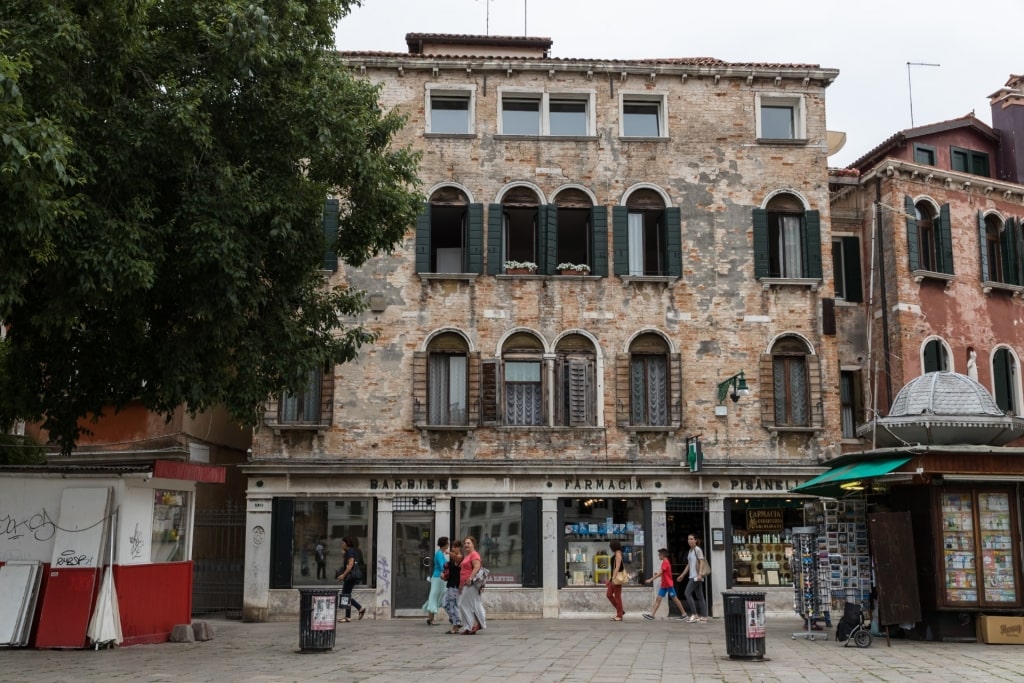
Campo San Polo
While wandering the district’s flagstoned lanes you’ll inevitably come across Campo San Polo. The city’s second-largest piazza, it’s a slice of real Venice after the historic bombast of St. Mark’s.
The square’s history includes a stint as a Middle Ages market, a games arena (until the games were prohibited), and the murder site of politician and writer, Lorezino de Medici, in 1548. Today, it’s more popular with local families than dagger-wielding assassins.
10 a.m.: Tour the Doge’s Palace
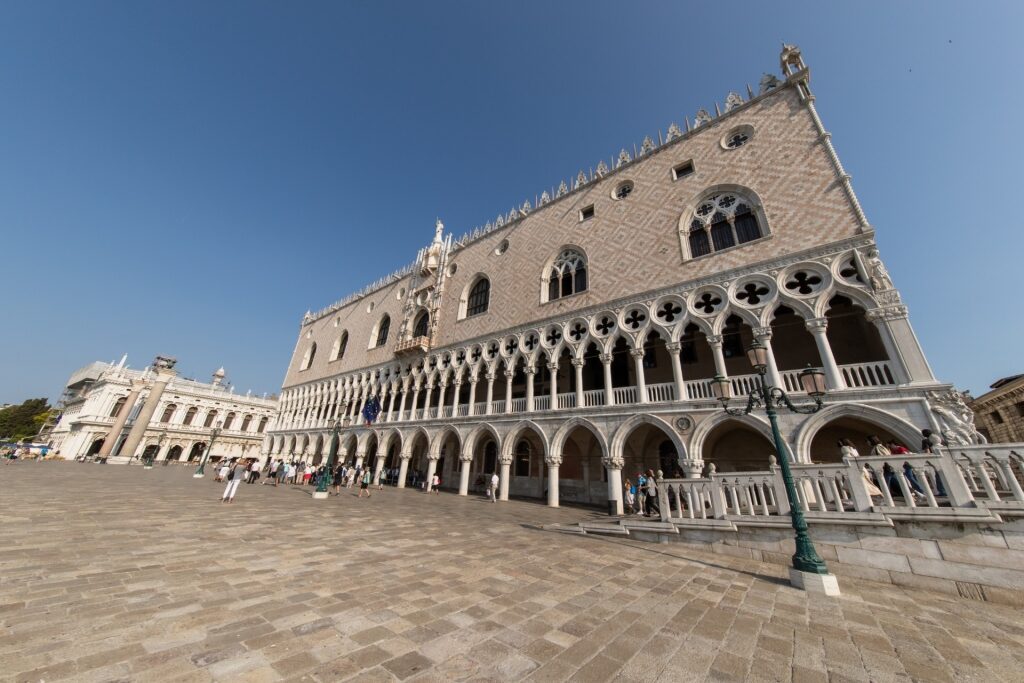
Doge’s Palace
Hop back over the Rialto Bridge to take in one of the significant landmarks that Venice is known for—the Doge’s Palace (Palazzo Ducale). Perhaps the finest example of Venetian gothic elegance in the city, the palace is a must-visit with one day in Venice. You’ll find it in the city’s main square, St. Mark’s (or Piazza San Marco).
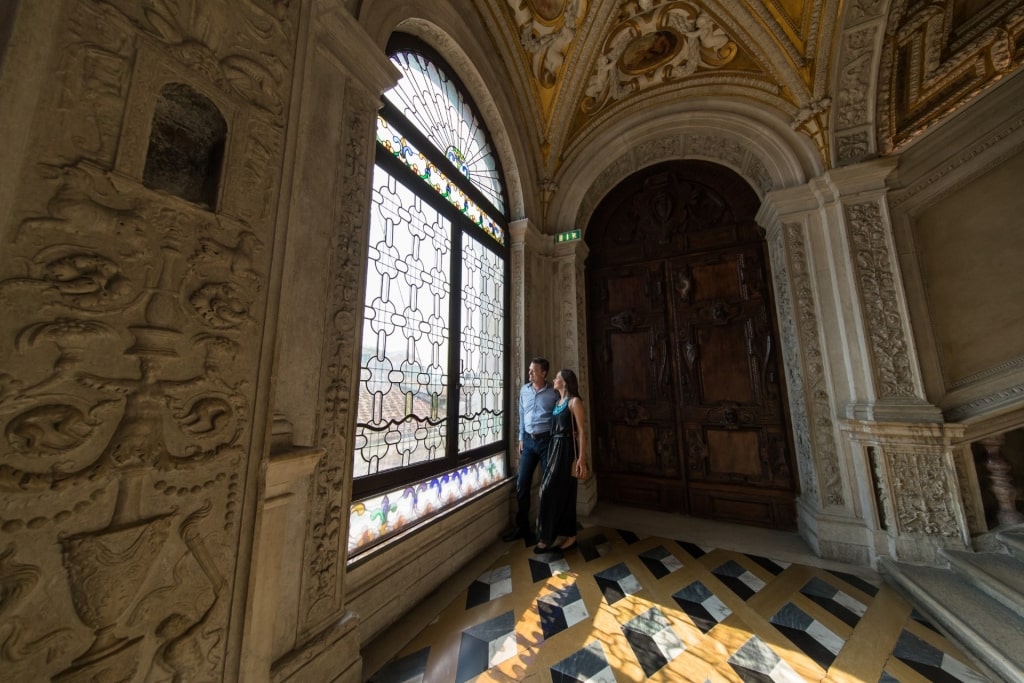
Doge’s Palace
As the former home of the Doge—the chief magistrate and ruler of Venice—this 14th-century pink marble confection is as awe-inspiring within as it is outside. Damaged twice by fire since it was first erected, it’s seen extensive renovation over the centuries.
Today, it’s a monument to the wealth and power that Venice accrued at its medieval zenith—and it challenges the Palace of Versailles for ostentatious application of gilt.
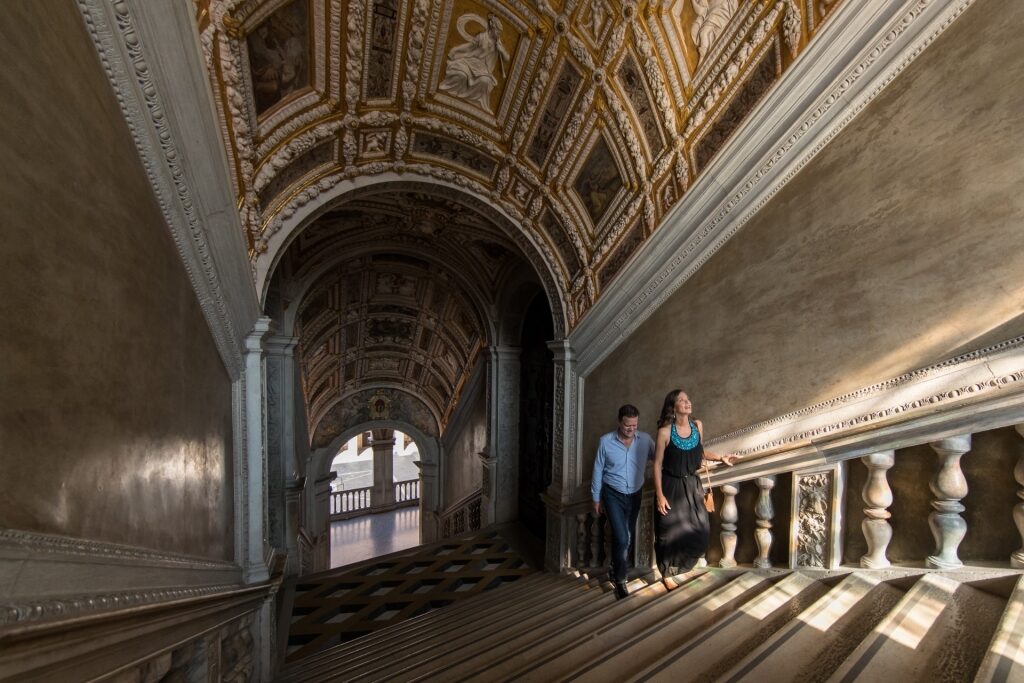
Doge’s Palace
Within, you’ll explore staircases plastered with 24-carat gold, elaborate wall paneling, and an armory exhibit that includes a “devil’s chest” concealing four booby-trapped pistols. Interspersed among these engrossing displays are masterpieces by artists including Veronese, A. Vittoria, and Titian.
Tintoretto’s painting of “Paradise”, however, is to the palace what Michelangelo’s ceiling is to the Sistine Chapel. Dominating an entire wall of the Hall of the Great Council, it’s immense—one of the world’s largest paintings—a tennis-court-sized riot of oils and symbolism.
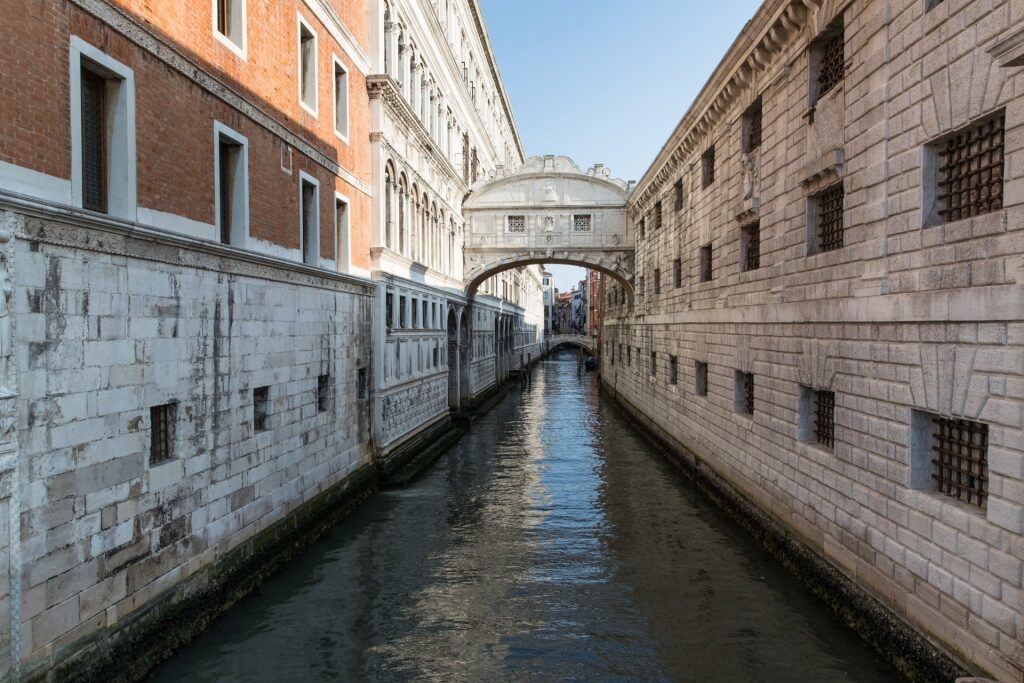
Bridge of Sighs
From “Paradise” in the Doge’s Palace to the exact opposite via the Bridge of Sighs. The poetic name masks the sinister purpose of this ornate limestone passageway. It conducted prisoners between the prison and the secret police’s interrogation chambers in the Doge’s Palace.
Cross over yourself and discover the jarring contrast between palace and prison. The highly recommended Secret Itineraries Tour takes you into passageways and rooms not usually covered by standard admission tickets, and includes Casanova’s graffitied cell from which he was to stage a daring escape.
11:30 a.m.: Cruise the Grand Canal
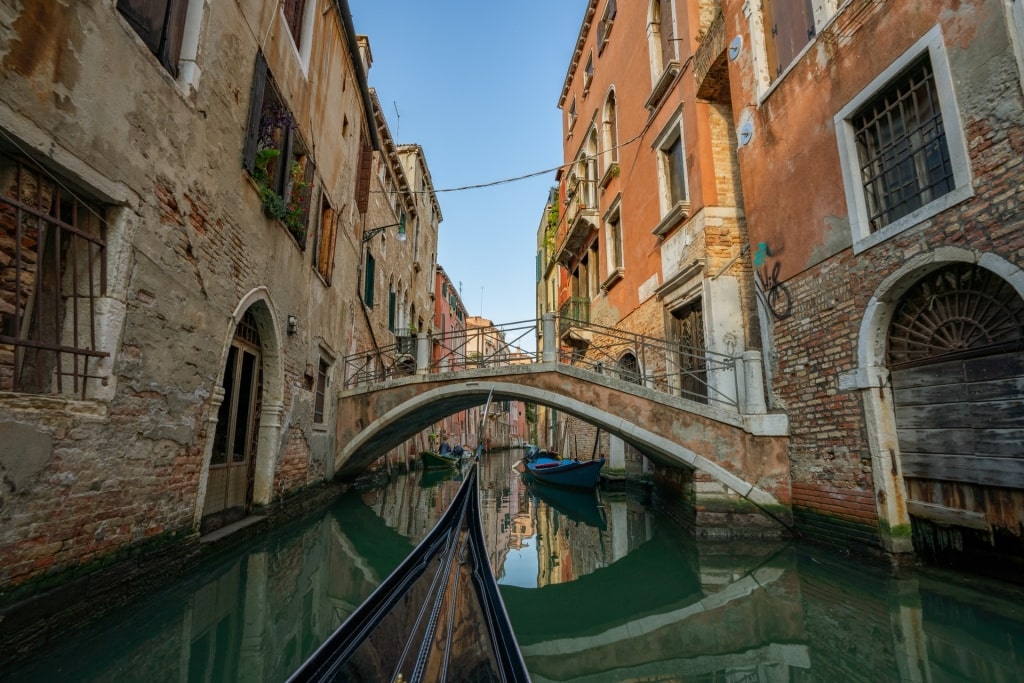
Grand Canal
The broad, busy waters of the Grand Canal or “Canalazzo” are a fine tonic following the squeeze of the Bridge of Sighs. When you see a map of Venice, the canal is the sinuous, river-like waterway that connects the southerly basin at San Marco with the lagoon near Saint Lucia.
With one day in Venice, a tour of its two-and-a-half-mile length is essential. Besides being a way of immersing yourself in everyday life on Venice’s main artery, a cruise of the Grand Canal also doubles up as a tour of the architectural history that Italy is known for.
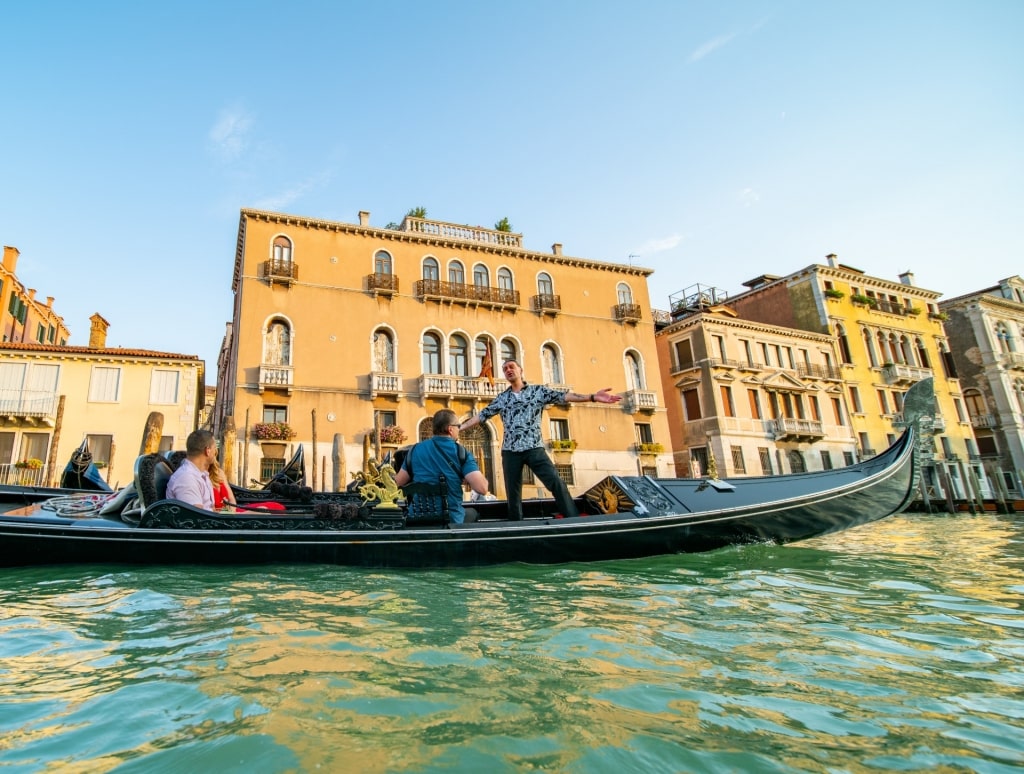
Grand Canal
Like the most expensive street in town, the Grand Canal is lined with historic palazzi, some dating back as far as the 13th century. Here, the wealthiest families vied for that all-important waterfront address, with shapely windows and intimate balconies overlooking the passing gondolas.
As you cruise its waters, you’ll spot the palazzi, occasionally obscured by puttering vaporetti (water buses) and traghetti (large gondolas), looking a little like minor Doge’s Palaces.
Look carefully and you’ll discern the differences between Venetian-Byzantine Fondaco houses—ornate combined homes and premises for wealthy traders—and out-and-out Venetian gothic palaces.
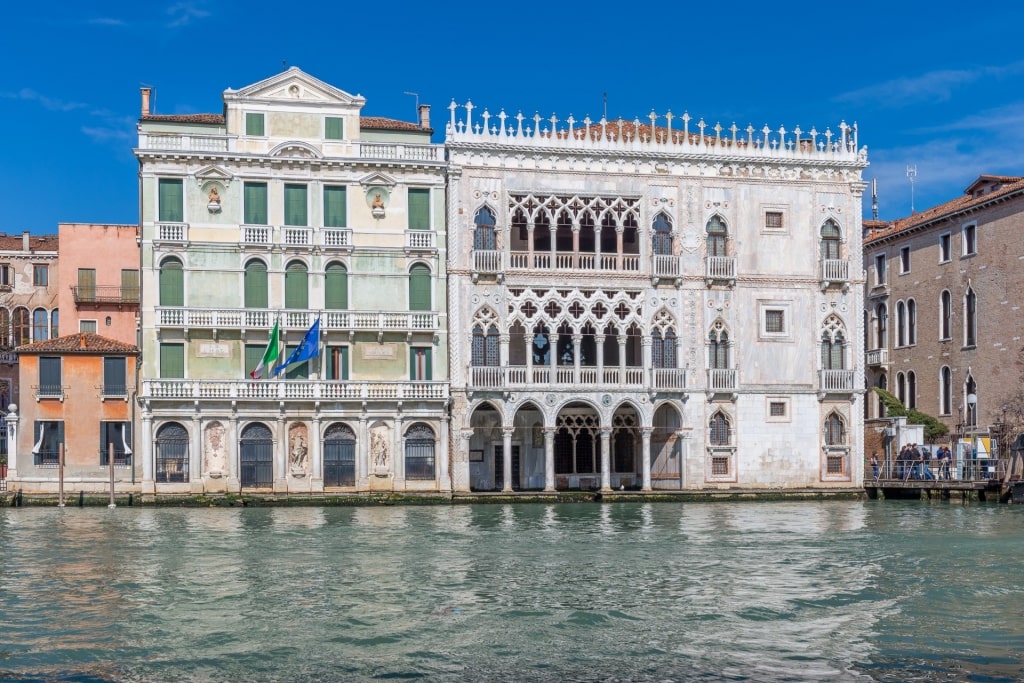
Ca’ d’Oro
Two with the most distinctive and intricate marble facades are Ca’ d’Oro and Ca’ Foscari, the latter now housing the University of Venice.
After you’ve decided which palazzo you’d like to acquire as your Venetian pied a terre, your next task is to spot a suitable canalside lunch spot, such as La Porta d’Acqua, for canalside oysters.
Read: Romantic Italian Honeymoon Destinations
12:30 p.m.: See the Art of Dorsoduro
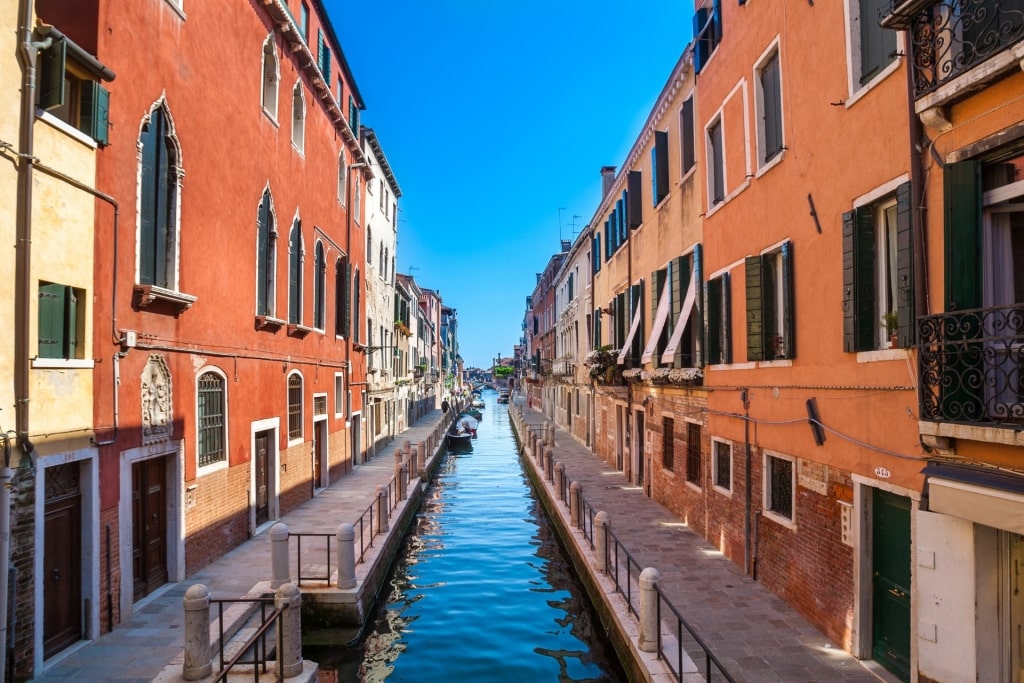
Dorsoduro
With the Venetian sun high above the madding crowd in St. Mark’s Square, escape the crowds and the heat with a visit to the Dorsoduro neighborhood.
Centered around an expansive square, it’s the haunt of artists and students. You’ll also find here a high density of superb galleries, museums, and bacari (charming bars that offer Venetian cicchetti snacks).
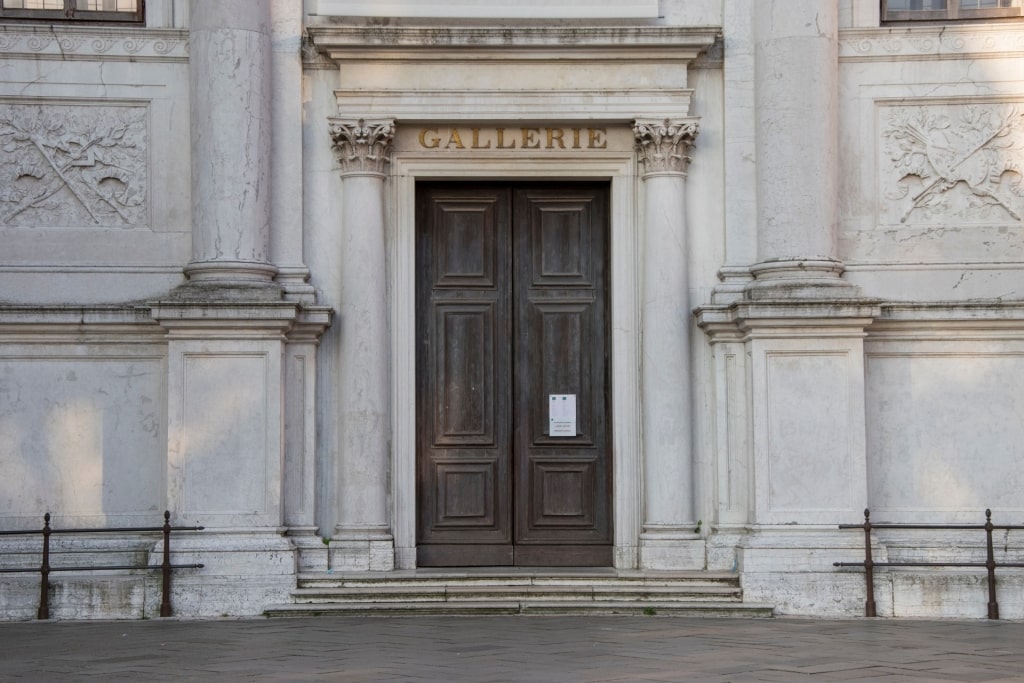
Gallerie dell’Accademia
Earn your cicchetti by visiting some of the big-name Italian art museums first. For your dose of old masters, walk straight on from the eponymous bridge to reach the Gallerie dell’Accademia, Venice’s most prestigious art gallery.
After a muse over the Titians, Tintorettos, and Tiepolos within, head east along the bustling, buzzing waterfront of the Grand Canal.
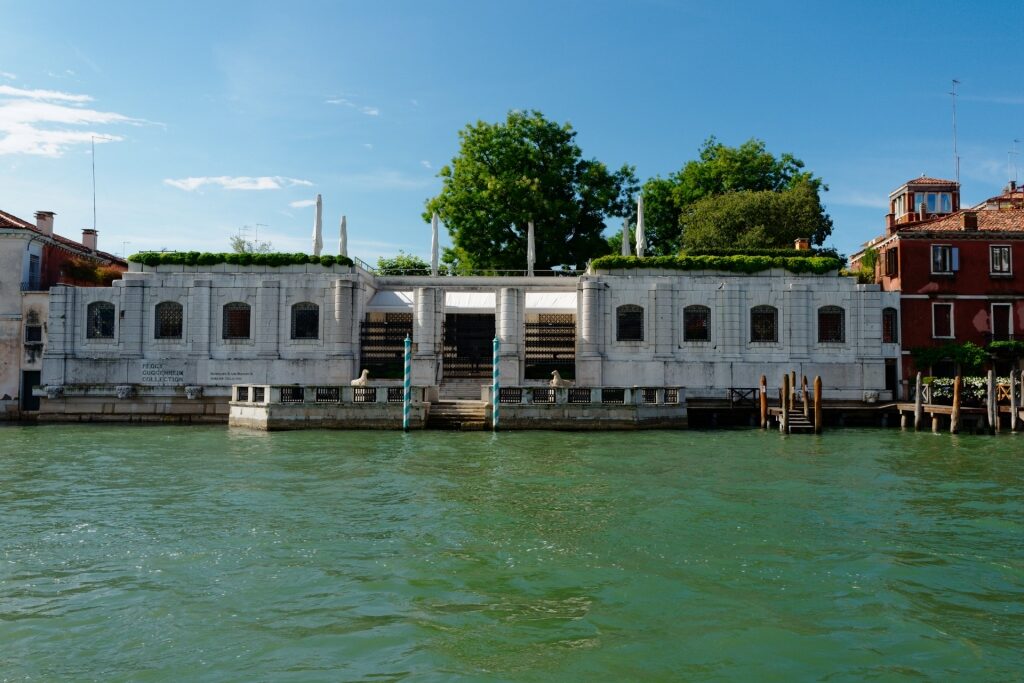
Peggy Guggenheim Collection
You’ll soon arrive at the Peggy Guggenheim Collection, a major museum of contemporary European and American art. Housed in the interior of the gleaming fortress of Palazzo Venier dei Leoni, Guggenheim’s former home, it’s a blast of modernity after the Gallerie dell’Accademia.
Wander among the Jackson Pollocks, or sip tea at the cafe overlooking the sculpture garden.
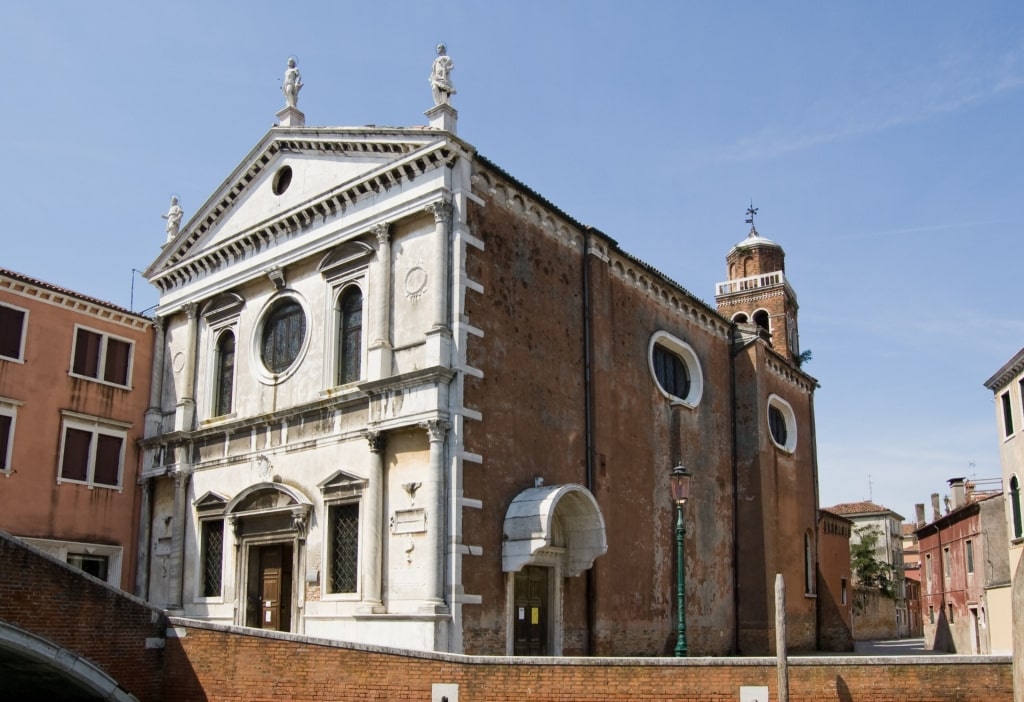
San Sebastiano church
Next, find the warmly hued San Sebastiano church. As much a temple to Paolo Veronese’s artistic virtuosity than a house of god, the church’s walls are luminous with a cycle of his paintings.
Once you’ve sated your desire for the sublime, find your way to the Calle Sant’Agnese. At this cute, boutique-cluttered street, you’ll find your souvenir Carnevale mask or Murano glass paperweight at a lower price point and free of the intense salesmanship exhibited on the other side of the Accademia Bridge.
3:00 p.m.: Visit the Island of San Giorgio Maggiore
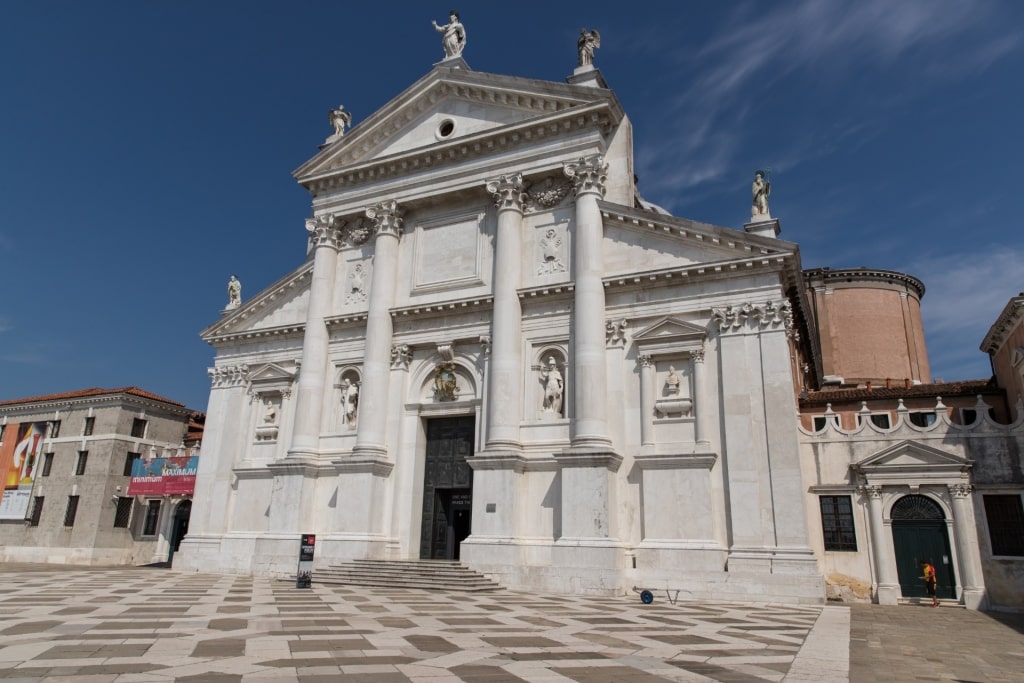
San Giorgio Maggiore
Stunning enough for Monet to fix his impressionist eye upon it for a series of paintings, San Giorgio Maggiore is one of Venice’s most striking sights.
In the golden morning or afternoon light, the eponymous basilica’s gleaming marble facade across the water is a vision straight out of a romantic poet’s sketchbook.
Over the Canale della Grazia from St. Mark’s Square, the only way to reach San Giorgio Maggiore is by boat. Once a privately owned island, by 982 AD San Giorgio Maggiore became a place of monastic sanctity.
The construction of the Palladio-designed monastery that dominates the skyline began in 1566 and stretched out over the course of 50 years.
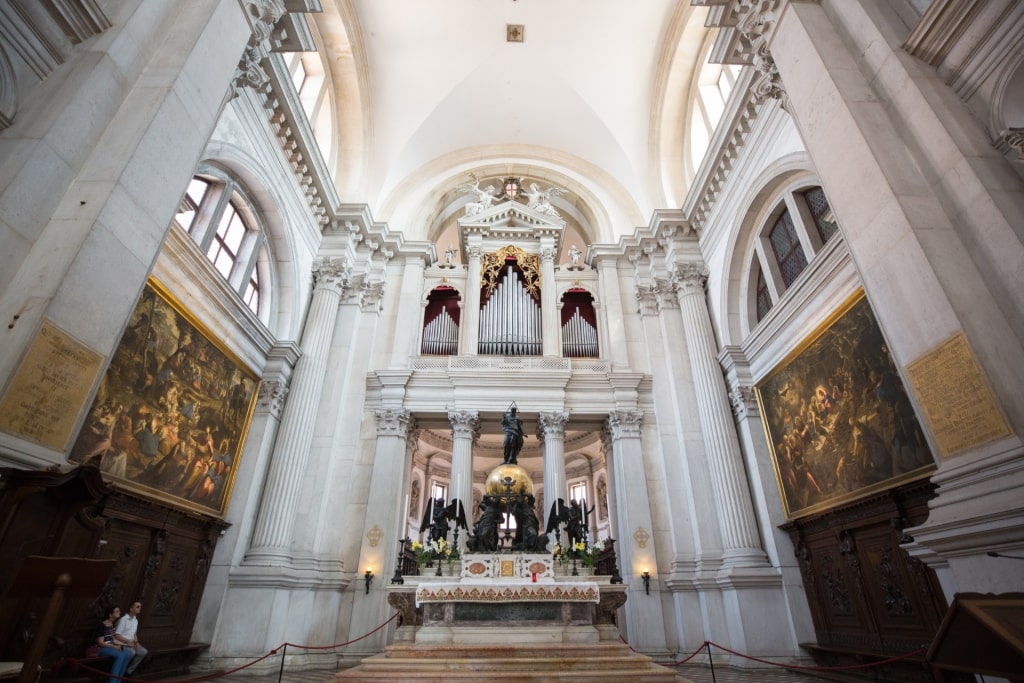
San Giorgio Maggiore
Within its bright and spacious interior, you’ll find three floors of suitably transcendent artwork. Huge paintings by Tintoretto help to strike the right note of awe, although it’s Sebastiano Ricci’s “Madonna enthroned with Saints” that’s considered the basilica’s masterpiece.
For more lofty visuals, jump in the elevator transporting you to the top of the 18th-century bell tower. There you can debate which is the more gorgeous perspective: St. Mark’s to San Giorgio, or vice versa.
Back at the waterfront, take a stroll along its flagstoned quayside to San Giorgio Cafe’s terrace for a glass of chilled soave while you wait for the return ferry to dock.
4:30 p.m.: Linger in St. Mark’s Square
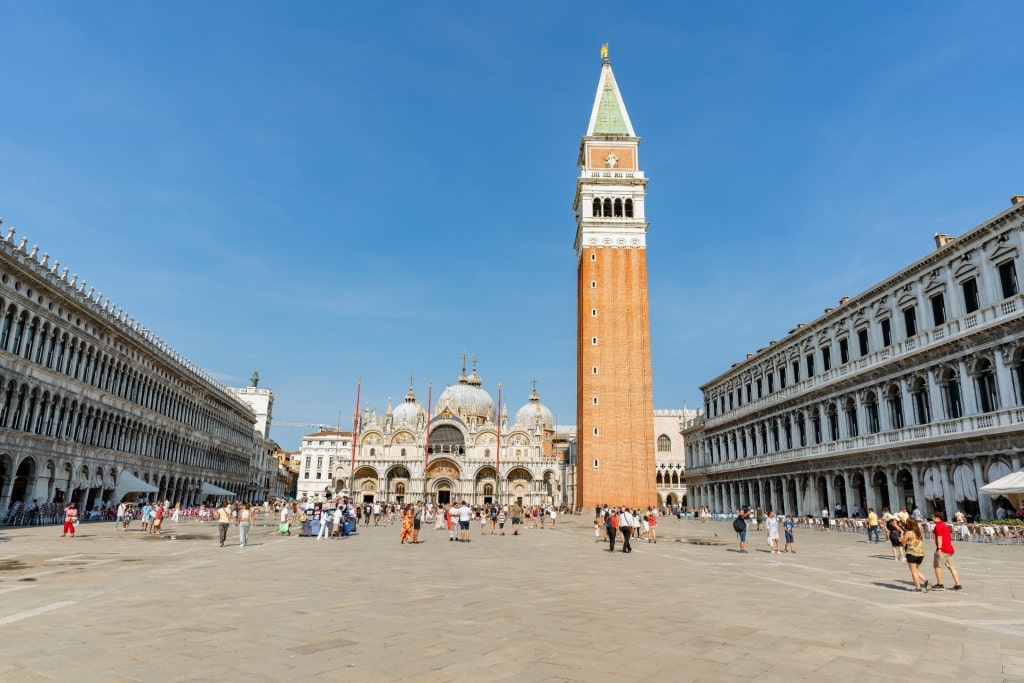
St. Mark’s Square
Step off the ferry and make your way to St. Mark’s Square. At this time of day, Venice’s principal piazza is beginning to quieten down, while the afternoon light sets the quintet of tiaras crowning the Basilica di San Marco ablaze.
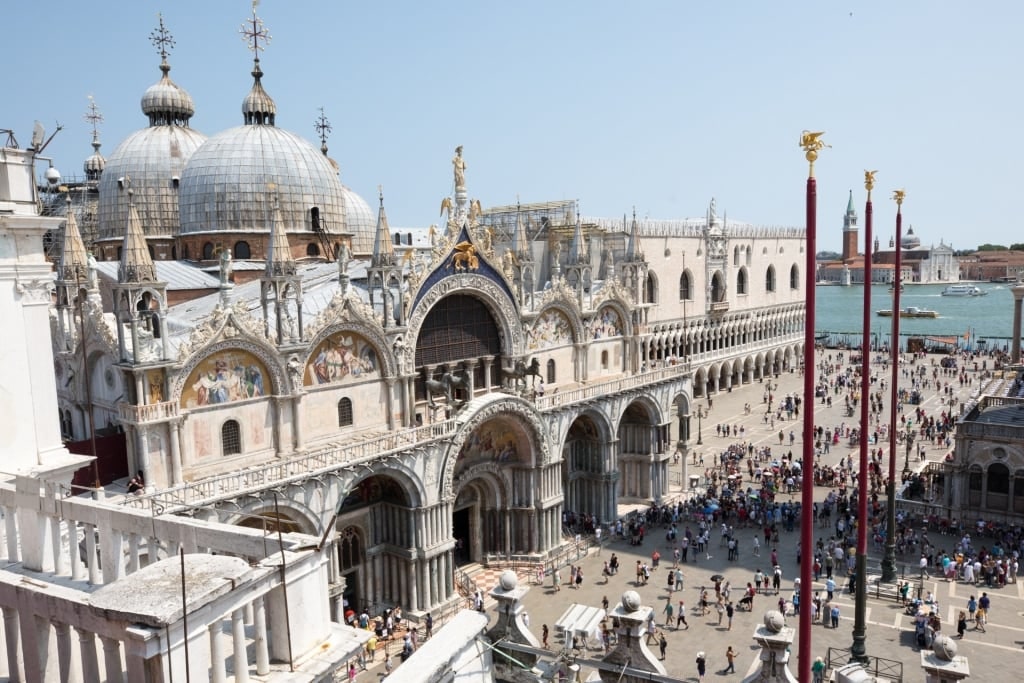
Basilica di San Marco
This remarkable holy site, with its Byzantine and Italian architectural fusion, is perhaps Venice’s most glorious landmark. Its domes bubble up overhead like inflated miters, while within you’ll enter a heavenly space of wall-to-wall gold leaf mosaic, lofty cupolas, and striking artistic and spiritual treasures.
Many of these priceless artifacts, including the original Triumphal Quadriga from the facade, have been gathered into the protective custody of St. Mark’s museum (found within the basilica).
However, behind the high altar, you’ll see the Pala d’Oro still in place (although now behind glass after Napoleon reportedly purloined a few stones). This Byzantine gold panel is considered the artistic crown jewel of the basilica (or jewels, perhaps, as it’s embedded with literally thousands of precious gems).
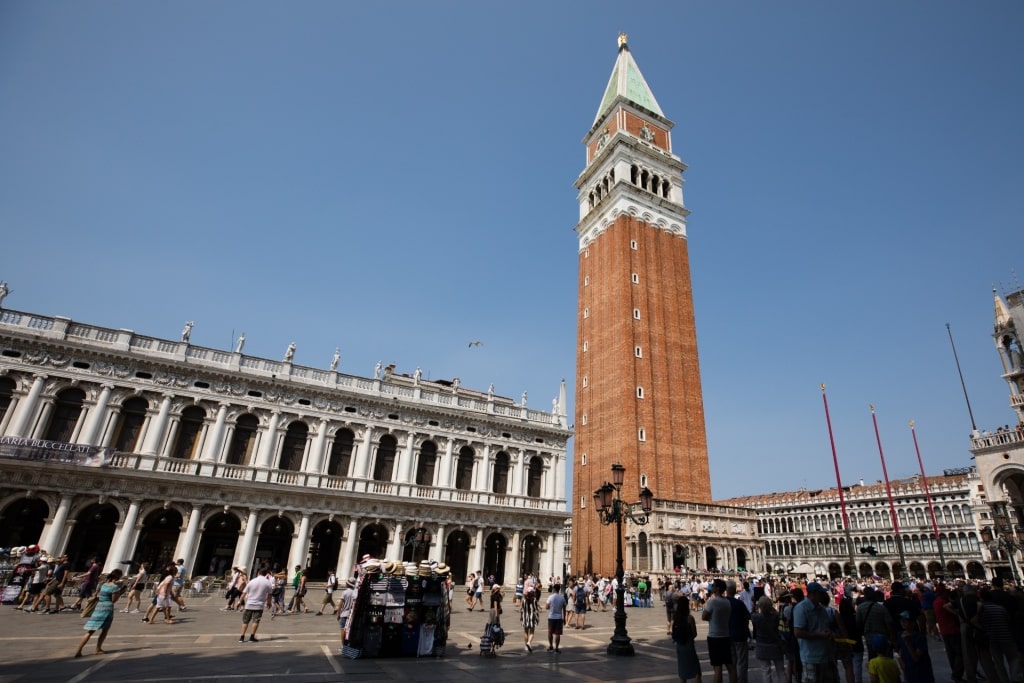
St. Mark’s campanile
Once you’ve explored the hush of this ancient sanctuary, emerge back into what Napoleon described as “The Drawing Room of Europe”.
For a bird’s-eye view, hop in the elevator of St. Mark’s campanile, or belltower. You’ll be rewarded with a panorama across the city’s mosaic of terracotta rooftops, bound by the opalescent border of the distant lagoon.
You could always select a restaurant from up there as well, deciding which table you’d like in the square below.
Afterward, with the waiters emerging from beneath the porticoes and bearing a chilled bottle and glasses to your table, relax as the restaurant’s string quartet strikes up and the evening sky looks like an impressionist take of the Pala d’Oro.
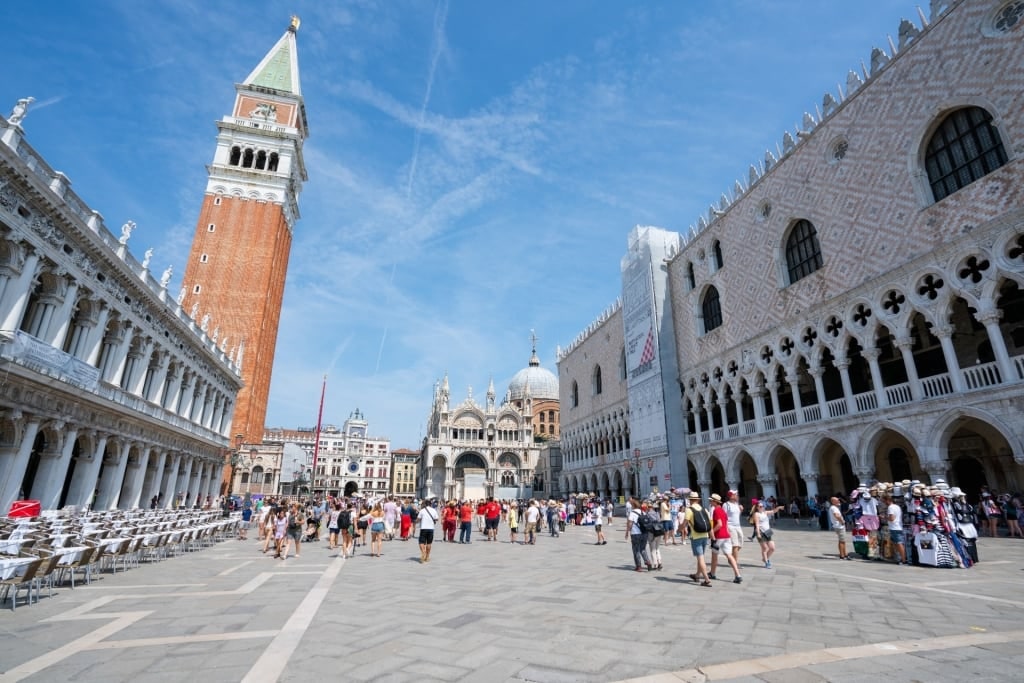
St. Mark’s Square
Experience one day in Venice, Italy—and, hopefully, longer—on a cruise to the Bel Paese. See St. Mark’s Square, sip espresso in centuries-old cafés, and take a gondola along the atmospheric canals.
Browse Celebrity’s cruises to Venice and book an incredible vacation to Italy.



